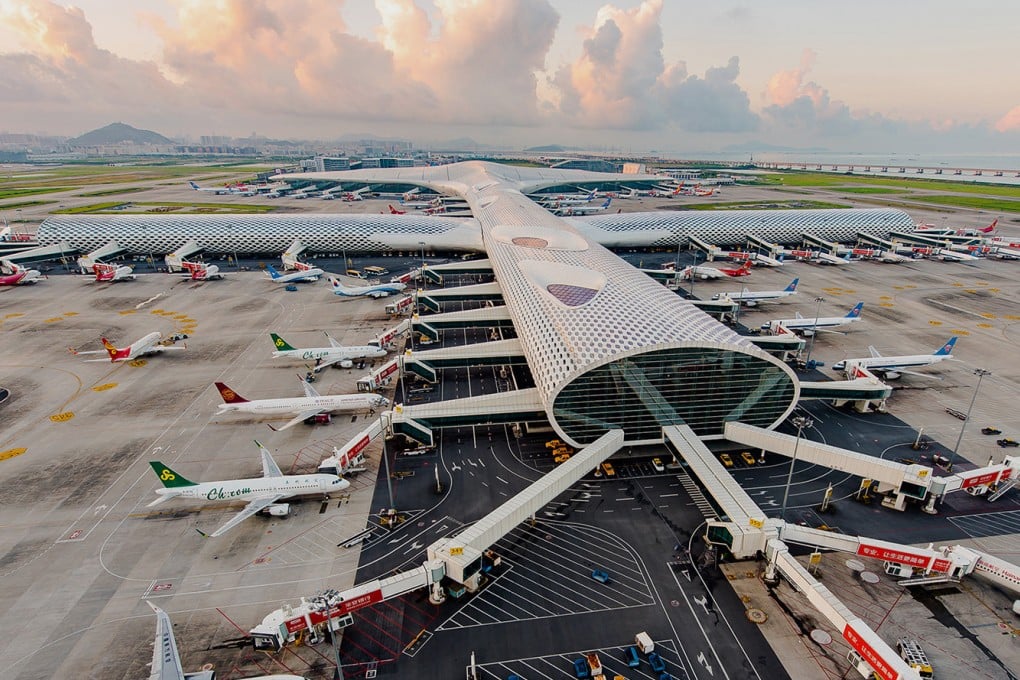China aviation: is Shenzhen stealing Hong Kong’s thunder as a go-to economic and travel hub?
- Shenzhen Bao’an International Airport is named the world’s most beautiful airport just two months after topping Hong Kong International Airport in Skytrax traveller poll
- But passenger traffic, an important indicator of economic activities, is still vastly different between the two international airports

Shenzhen’s aviation status appears to be taking off, and its international airport’s rising appeal could eventually challenge neighbouring Hong Kong’s dominance in the Asia-Pacific region by diverting some passenger traffic from the global travel hub.
While analysts say more efforts are needed to achieve such a lofty goal that would carry with it considerable economic advantages, Shenzhen Bao’an International Airport turned heads this month by being named the world’s most beautiful airport, by the World Air Stewardess Association.
The group still found Hong Kong to be the “best airport” overall, but the results came just a couple of months after another poll by air transport research firm Skytrax showed how far Shenzhen has come in a short time, and how rapidly the tech hub is gaining prominence.
Findings from the survey by the UK-based consultancy, released in March, showed that air travellers around the world thought more highly of Bao’an International Airport – placing it 31st on the World’s Top-100 Airports list for 2023, compared with 57th in 2022.
Hong Kong placed two spots lower, at 33rd – a sharp fall from 20th a year prior.
Home to the tech giants such as Huawei Technologies and new-energy automaker BYD, Shenzhen has been consolidating its footing as a go-to economic hub in the Greater Bay Area. And this has been in no small part because of the city’s growing momentum in both shipping and civil aviation – two sectors in which Hong Kong has long held a regional advantage.